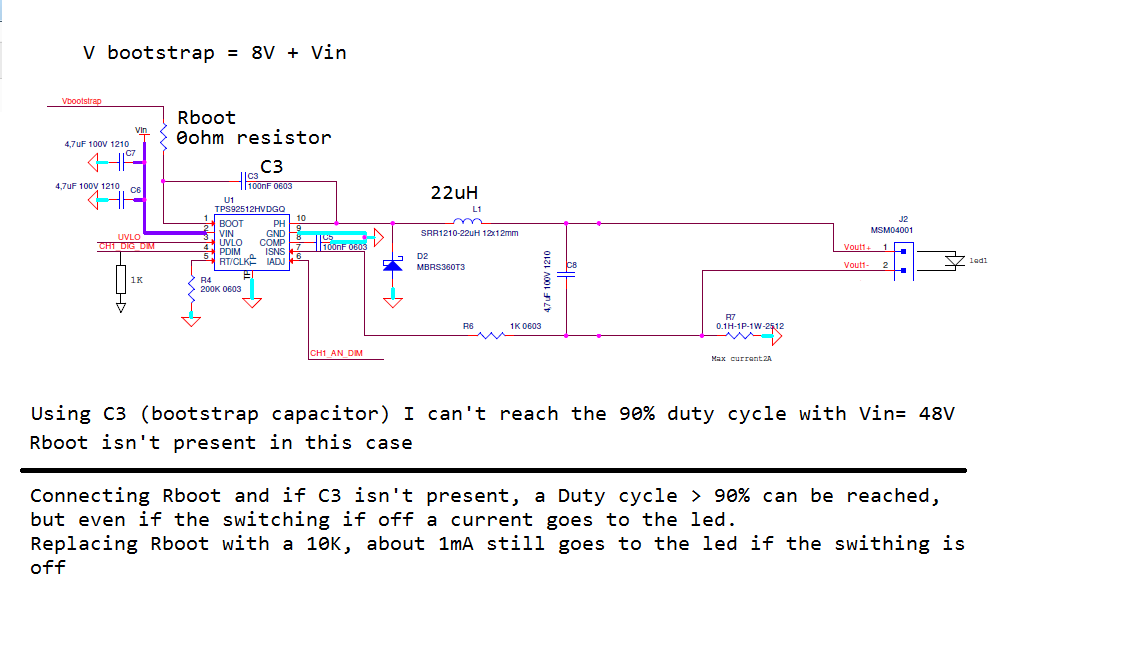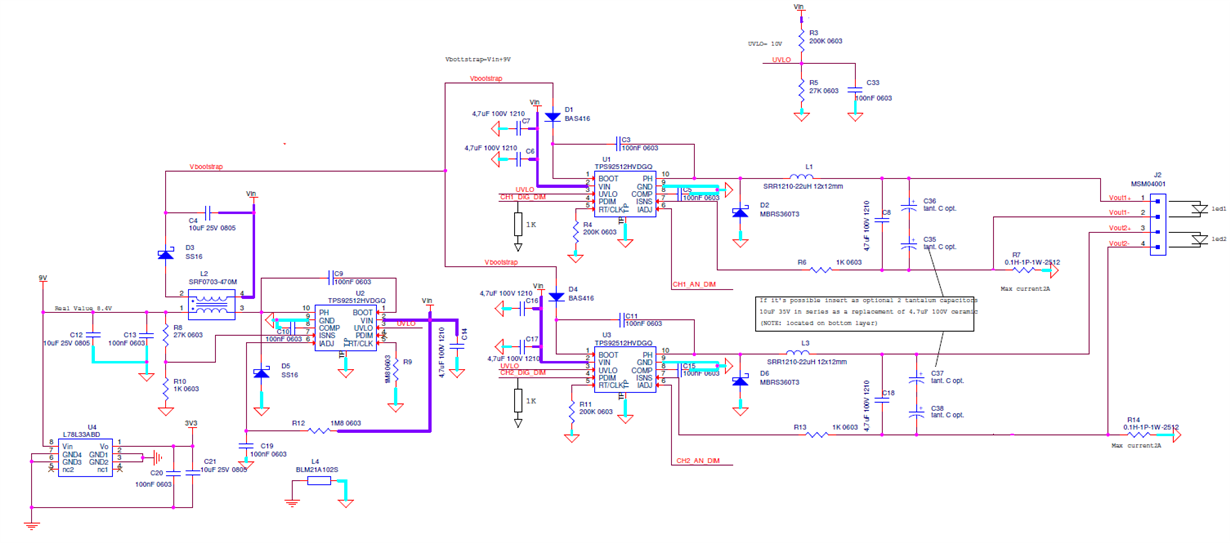Dear Texas,
I'm using the TPS92512HV as a led driver. I need to work with a Vin that goes from 12V to 48V.
I need to reach an output voltage that goes from 10% Vin to at least 90% of Vin (or even higher if possible).
Supplying with 24V or 12V it can reach the 90% of the duty cycle using the bootstrap capacitor, supplying with 48V I can reach at least 87% of the duty cycle.
Since I knew I was near the border of the max duty cycle, i have provided an optional supply 8V higher than Vin.
But something odd happens connecting this voltage.
Even if the Pdim is off and the switching doesn't switch, the output voltage doesn't goes to 0V and the leds connected to the output remains on (even with a low current). It seems that a certain amount of current can pass between the BOOT pin and the output (it seems that there is a zener beteen output and vboot with a vr < 8V. Is it correct? If so, which is the correct voltage to be provided to the BOOT pin?) In the data sheet is reported that if a voltage at least 2V higher than Vin is provided it's possible to reach even 100% of duty cycle. I have seen that I can reach nearly 95% of duty cycle providing Vboot external which is ok for me, but the output doesn't turn to 0V if the switching is off.
Thanks,



